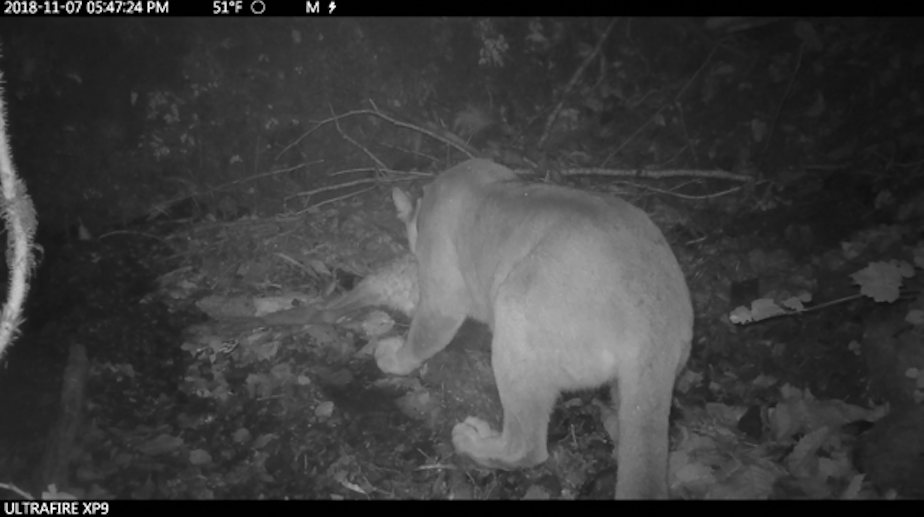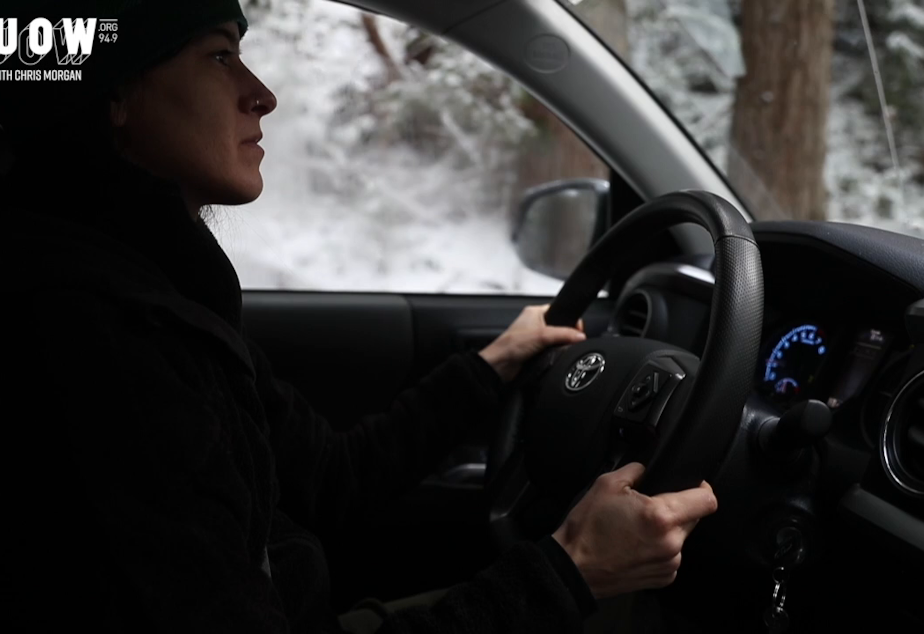How to catch a cougar
The cougar is elusive, stealthy, and mysterious. It's also a very tricky animal to study. Even in a state like Washington with more than 2,000 cougars (and 7.5 million people). These big cats, these “American lions,” are rarely ever seen. So researchers have to get creative.
Such as this "camera trap" that I watched wildlife biologist Kim Sager-Fradkin check up on during a trip to the Olympic Peninsula.
These cameras are placed strategically, deep in the forest. They take a photo anytime an animal walks past the sensor. It’s a non-invasive way to monitor the wildlife species in an area. Kim takes out the memory card. On it are all the photographs this camera has captured. She uploads them to her laptop, hoping for some good snapshots of unsuspecting wildlife.

And the results ... just a photo of a volunteer as they set up the cameras. Still, this is an amazing advancement in wildlife-monitoring tech.
When I first got my start in field work, back in the early 1990s, we didn’t have anything like these cameras. And when Kim was fresh out of school, there was a very different way to catch an image of a furry passerby.
Instead, we had cameras with actual rolls of film (kids, ask your parents what film was). These were simple point and shoot cameras. You’d set one of those against a tree, then you'd invent some other tech to help you out.
"And you used a string and a part of a hanger," Kim recalls. "And you had the hanger attached to the string and the string attached to a piece of bait. And then the animal would come and pull on the bait, which would cause the string to pull and cause that hanger to depress and take a photo. So that's how far we've come in 20 years."
MacGyver may have been an influence (kids, ask your parents who MacGyver was).
"Funny to think this was cutting edge back then," Kim said.
Researchers were limited. The cameras could only take 36 pictures before they were full. Not to mention, you had to drop the film off at a pharmacy to get it developed.
But today, things are a little different with digital photos and massive storage drives. Each one of these new, high tech cameras can take tens of thousands of images. Amazing for wildlife science.

"The amount of data is astounding, exciting and overwhelming all at once," Kim said.
Kim works for the Lower Elwha Klallam Tribe and has partnered with Panthera, a global conservation group focused on big cats, for this research project. Andy Stratton works for Panthera and is helping Kim collect all this data. He took me to a recent site where a cougar in the study took down a deer.
"The first thing they do when they kill it is sheer down these ribs and open up the internal organs," described Stratton. "So that’s real key on a cougar kill, bears don’t really do that."
He quickly describes what he sees and loads all the information into an app. This information is added to the data collected from the cameras to paint a picture of how these cats live. The tribe and Panthera can actually track the movements of multiple cougars in the forest, thanks to some special collars, GPS, and the click of a mouse.
It can almost be too much of a good thing. This much data can be hard to handle. Over the next two episodes of THE WILD, we’re going to take a look at how technology is changing the way field researchers and wildlife scientists do their work.
And we're going to learn that tech is nothing without some good old fashioned field skills. Researchers still use the basics, especially when it comes to catching a cougar.
Sponsored
THE WILD is a production of KUOW in Seattle in partnership with Chris Morgan The UPROAR Fund It is produced by Matt Martin and edited by Jim Gates. It is hosted, produced and written by Chris Morgan. Fact checking by Apryle Craig. Our theme music is by Michael Parker.
Follow us on Instagram (@thewildpod) for more adventures and behind the scenes action!





